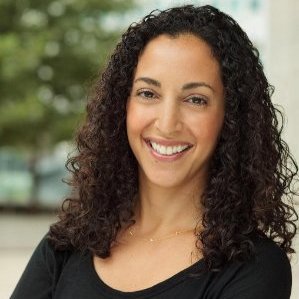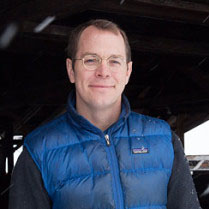

With Lauren Brust Moss and Ben Southworth
Goal 1 of NESEA’s recently adopted Strategic Plan reads: “Review all existing and developing programs through the lens of a clear and transparent content curation process, giving priority to development of an online platform as a place to share and discuss generated content.” I interviewed Lauren Brust Moss (LM) and Ben Southworth (BS), the two board members who are championing this goal, to learn more about how they plan to tackle this goal. (Of course, Lauren also served as Co-Chair for BuildingEnergy NYC 2016).
JM: Goal 1 refers to a transparent content curation process. What do you think are the biggest challenges, currently, with respect to NESEA’s content curation?
LM: I can really only speak to the process for BuildingEnergy NYC, but in my mind, the biggest challenge is that there’s too much content. How do you cull it down to make it relevant and inclusive? We want to be respectful of all members, to make sure people’s voices are heard, but there’s a limit to our capacity. We also need to respect the principles of building science in our content. In NYC, unlike in Boston, our content has been more driven by owners than practitioners. Sometimes this approach conflicts with our desire to be “member driven,” as these owners are not (yet) NESEA members. But it is essential that we get them on board.
JM: What has worked well with respect to content curation in NYC?
LM: We use multiple iterations. First we issue a call for proposals. The content committee identifies a central theme, or a few central themes, to focus the content. From there, they curate the submitted proposals and select those that fit best. We share their first draft with an advisory committee, who provides feedback on any “holes” in the content. Then the content committee meets again to fill in those gaps.
BS: It seems like this process could be readily adapted to other NESEA programs, as long as we don’t make it too cumbersome. This process has the advantage of being able to involve more members than we’ve historically done, but for discrete assignments, without having to commit to attending every single planning meeting.
JM: So how are you planning to approach developing a “clear and transparent content curation process?”
BS: Our initial thought is to develop a best practices manual of sorts for conference chairs. We’ve already invited a number of past conference chairs to participate in the process. We hope they’ll help us reflect on what works, and what doesn't for conference planning, and harmonize the processes for the two conferences. From there, we can figure out how that process applies to other NESEA programs, like BuildingEnergy Pro Tours and BuildingEnergy Magazine. That’s as far as we've gotten.
JM: Let’s talk about the second part of Goal 1. What do you mean by “giving priority to development of an online platform as a place to share and discuss generated content?” You’re not planning to replicate other fora like Green Building Advisor, are you?
BS: No. I don’t think anybody on the Board is interested in trying to compete with these other platforms who are already creating online communities and discussion boards as a core part of their work. In my mind, the term “online platform” is a proxy for using technology to generate community and share and scale the expertise that we have. As I think about this goal, I’m reminded of Paul Eldrenkamp’s steady refrain, that what NESEA does best is get the right people in the room to have the right conversations. We have to use technology as a tool for achieving our overall goal, and not view it as a primary goal in and of itself. Using technology could be fraught with potential perils, especially given that the Board, and most of the NESEA staff, are not “digital natives.”
LM: Places to share information exist already. I’m interested in looking at what tools other community-based organizations use, even those who are not involved in sustainable energy, and figuring out what we can learn from them.
BS: The Basecamp project that NESEA’s BuildingEnergy Bottom Liners participate in has become a really powerful and important way for NESEA members to share information and connect with each other. It’s not perfect, but it’s a good example of the technology working for us rather than the reverse. The “old boys” (many of whom are among the most knowledgeable in our network) are familiar with it, so that helps. Maybe there’s something better out there, I don’t feel compelled to find it if what we have works.
>LM: We are hoping to provide members with a chance to weigh in as we sort through the options. If there are members that are part of specific online communities that work well for them, we’d love to understand what they are and why. What’s compelling about those communities that makes them want to participate, given the information overload we all face?
BS: That’s a great point. I used to go to GBA a lot. That’s a pretty vibrant community. Many NESEA members go there. We don’t need or want to recreate it. We need to think hard about what our online community is for. For example, if the Community Blog is a thinly veiled marketing ploy, not attached to any specific NESEA program, it’s destined to fail. Like NESEA’s other programs, our online community will work well only if it’s member driven.
Our Mission
NESEA advances sustainability practices in the built environment by cultivating a cross-disciplinary community where practitioners are encouraged to share, collaborate and learn.





Add comment